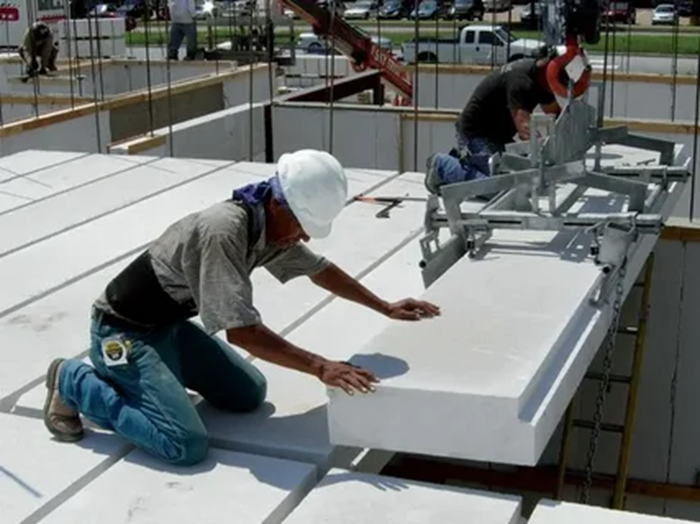Aerated concrete is a building material with a porous (or, as experts say, cellular) structure. The massif is filled with carbon dioxide bubbles 2-4 mm in size, which gives the material special qualities:
- ability to retain thermal energy;
- low weight, allowing to reduce the foundation power and save on building materials.
These qualities were the main goal of the development of a new material, which was produced about 100 years ago. The final form of aerated concrete was obtained in the 1930s. This is non-autoclaved aerated concrete, which is still used today. Over time, an autoclaved type of material was developed, which has increased strength and resistance to external loads.
However, the porous structure gives aerated concrete not only useful qualities. The material has serious disadvantages:
- low load-bearing capacity;
- tendency to absorb and accumulate moisture;
- brittle, brittle texture.
Due to these shortcomings of aerated concrete, the popularity of the material was extremely low for a long time. Many builders treated it as one of the types of rigid thermal insulation, but not as a full-fledged building material. The presence of the root “concrete” in the name created confusion; many builders perceived it as a kind of dense, traditional concrete. Accordingly, the approach to construction was familiar, which created the ground for errors and miscalculations.
The main problem was low load-bearing capacity. Ordinary concrete does not tolerate multidirectional (tensile) loads well, but easily withstands enormous pressure. Gas blocks, due to their porous structure, are not able to withstand both types of loads. Under pressure, the pores in the material collapse, and the material sags.
In addition, an unpleasant discovery was the inability of aerated concrete for open use. The material tends to absorb water, which accumulates in the pores. Because of this, it gains the ability to conduct heat well, which makes it necessary to increase the cost of heating the house. In addition, in winter, water freezes and begins to expand, destroying the walls. It is necessary to use protective coatings or impregnating materials, changing the mode of water vapor removal.
All these difficulties can be overcome if you initially treat aerated concrete as a separate type of building material with specific qualities. However, the long-term habit of dealing with dense grades of concrete has caused a wave of rejection of the material. It was remembered relatively recently, when the mass construction of private residential buildings began. In this area, the material turned out to be very effective – the buildings are low, and the ability to retain thermal energy allows you to save on heating throughout the entire service life of the house.

